How to Train a Puppy: Bringing a puppy home is an exciting moment filled with joy and anticipation. But, as a new pet owner, you might feel unsure about where to start with training. Puppies want to learn. Their early habits shape their behavior for life. That’s why starting early is crucial for mastering the skills needed to train a puppy.
The first few weeks with your puppy can feel overwhelming. Questions like “What is the first thing I should train my puppy?” or “How can I teach my puppy not to bite?” are common for beginners. Training doesn’t need to be stressful or complicated. With the right approach, even the most energetic pups can learn commands like “sit,” “stay,” and “pee outside.” It will be quick.
This guide will give you step-by-step puppy training tips. It covers potty training and stopping unwanted chewing. You’ll also find a detailed puppy training schedule by age to keep your progress on track. With clear instructions and advice, you can help your puppy. It will become a happy, well-mannered family member.
Also Read
These techniques will make your home or outdoor training simple and fun. Let’s dive into why early training is important and how it benefits you and your puppy.
Why Puppy Training Matters

Training your puppy early sets the foundation for a happy and well-behaved companion. Puppies, like children, thrive on structure and consistency. Without proper guidance, they may develop habits that are difficult to correct later. Early training is important. It builds a bond and helps your puppy grow into a confident, obedient adult dog.
Key Benefits of Early Training
- Improved Behavior Early training prevents destructive habits like chewing on furniture or excessive barking. By teaching basic commands, your puppy learns what is acceptable behavior.
- Strengthened Bond Training enhances communication between you and your puppy. The process of teaching commands fosters trust and understanding.
- Socialization Skills. Introduce your puppy to people, pets, and new places. This helps them feel at ease in different situations and reduces anxiety.
- Safety Commands like “sit” or “stay” can keep your puppy safe in potentially dangerous situations, such as crossing a busy street.
Steps to Start Training Early
- Use Positive Reinforcement Reward your puppy with treats or praise for good behavior. This motivates them to repeat desired actions. Try these high-quality treats on Amazon.
- Create a Routine Consistent training schedules help puppies understand what’s expected of them. Incorporate a daily routine with time for learning, play, and rest.
- Focus on Basics First. Start with simple commands like “sit,” “stay,” or “come.” Gradually introduce more complex behaviors.
Table: Puppy Training Milestones
| Age (Weeks) | Key Milestones | Training Focus |
|---|---|---|
| 8-12 | Socialization, crate use | Basic commands (sit, stay) |
| 12-16 | Potty training progress | Leash training, biting control |
| 16+ | Reinforcement of basics | Advanced commands (recall, fetch) |
Recommended Tools for Training
- Clicker for Training: Affordable Clicker on AliExpress
- Comfortable Leash and Collar: Durable leash on Amazon
- Crate for Training: Top-rated crate from AppSumo
Visual Aid Placeholder
Image Idea:
A cheerful puppy learning to “sit” with an owner holding a treat, surrounded by toys and a leash.
External Reference
For more detailed insights on the importance of early training, visit American Kennel Club (AKC).
Preparing for Puppy Training: Essential Steps for Success
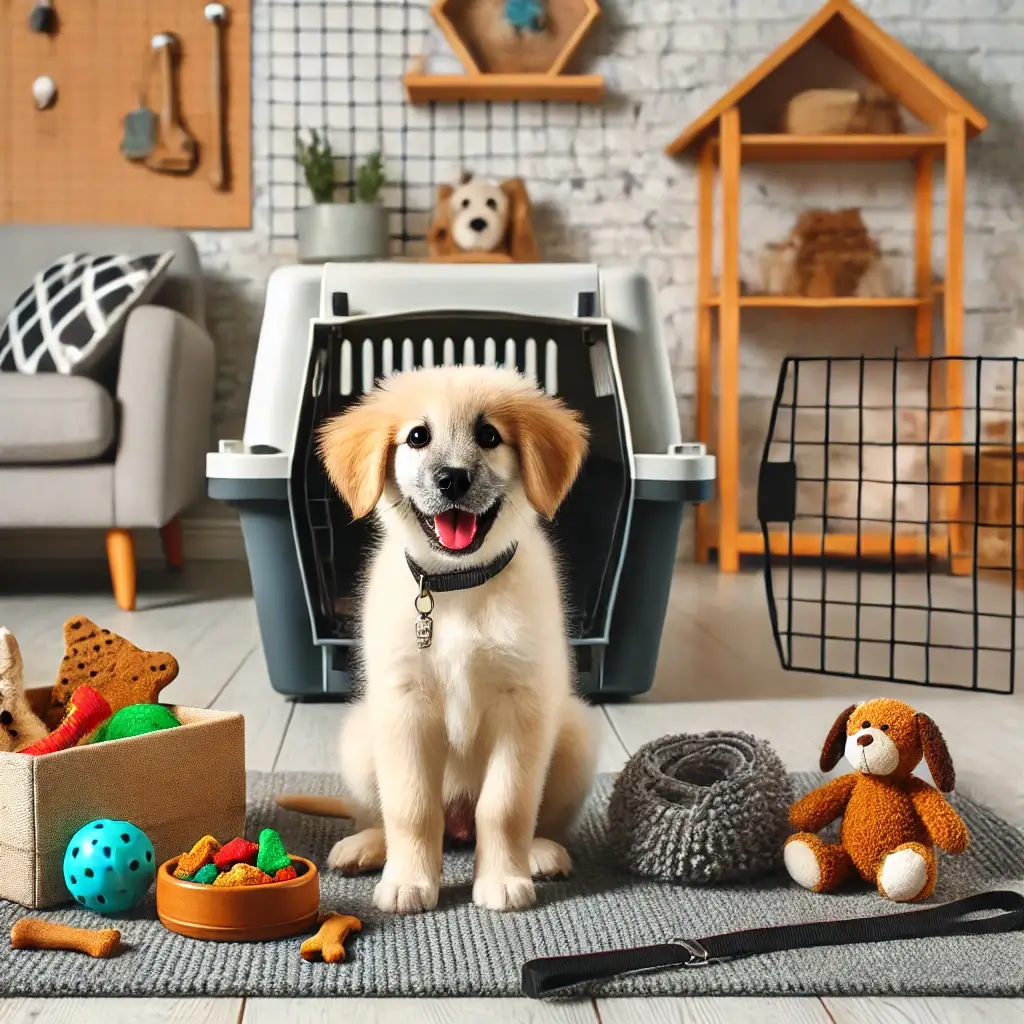
Before starting how to train a puppy, preparation is key. The right environment and tools make training your puppy easier. The goal is to create a space where your puppy feels secure, motivated, and ready to learn.
1. Setting Up the Environment
Your home should feel welcoming but structured. Choose specific areas for sleeping, eating, and playing. Puppies thrive when they understand boundaries. A quiet, cozy corner for sleeping and a separate play area can help them adapt to their new home faster.
For potty training, choose an accessible spot for outdoor trips. Consistency is critical. Using the same spot helps your puppy link it to potty time. Consider using training pads indoors for accidents. But aim to transition to outdoor training.
2. Essential Tools for Training
Equipping yourself with the right tools makes training efficient and enjoyable. Here’s what you will need:
- Training Treats: Choose small, tasty rewards for positive reinforcement. Shop for premium treats on Amazon.
- Leash and Collar: A comfortable and durable leash is vital for leash training. Check out this highly rated option on AliExpress.
- Crate: Crate training provides a safe space for your puppy and aids in potty training. Top-quality crates are available on AppSumo.
- Clicker: A training clicker helps to reinforce positive behaviors with sound cues.
3. Creating a Routine
Consistency builds confidence. Puppies learn faster when they follow a predictable routine. Plan a daily schedule that includes:
- Meal times
- Training sessions (10–15 minutes each)
- Playtime and exercise
- Potty breaks
Table: Ideal Daily Puppy Training Routine
| Time | Activity | Purpose |
|---|---|---|
| Morning | Walk and potty break | Burn energy, build routine |
| Mid-morning | Training session | Teach new commands |
| Afternoon | Nap time | Rest and recovery |
| Evening | Play and bonding | Strengthen your relationship |
4. Understanding Your Puppy’s Motivation
Different things motivate different puppies. Some respond well to treats, while others love toys or praise. Experiment with rewards to determine what drives your puppy to succeed. Always use positive reinforcement—punishment can create fear and hinder progress.
External Reference
Learn more about setting up the perfect training environment at PetMD.
Key Principles of Puppy Training
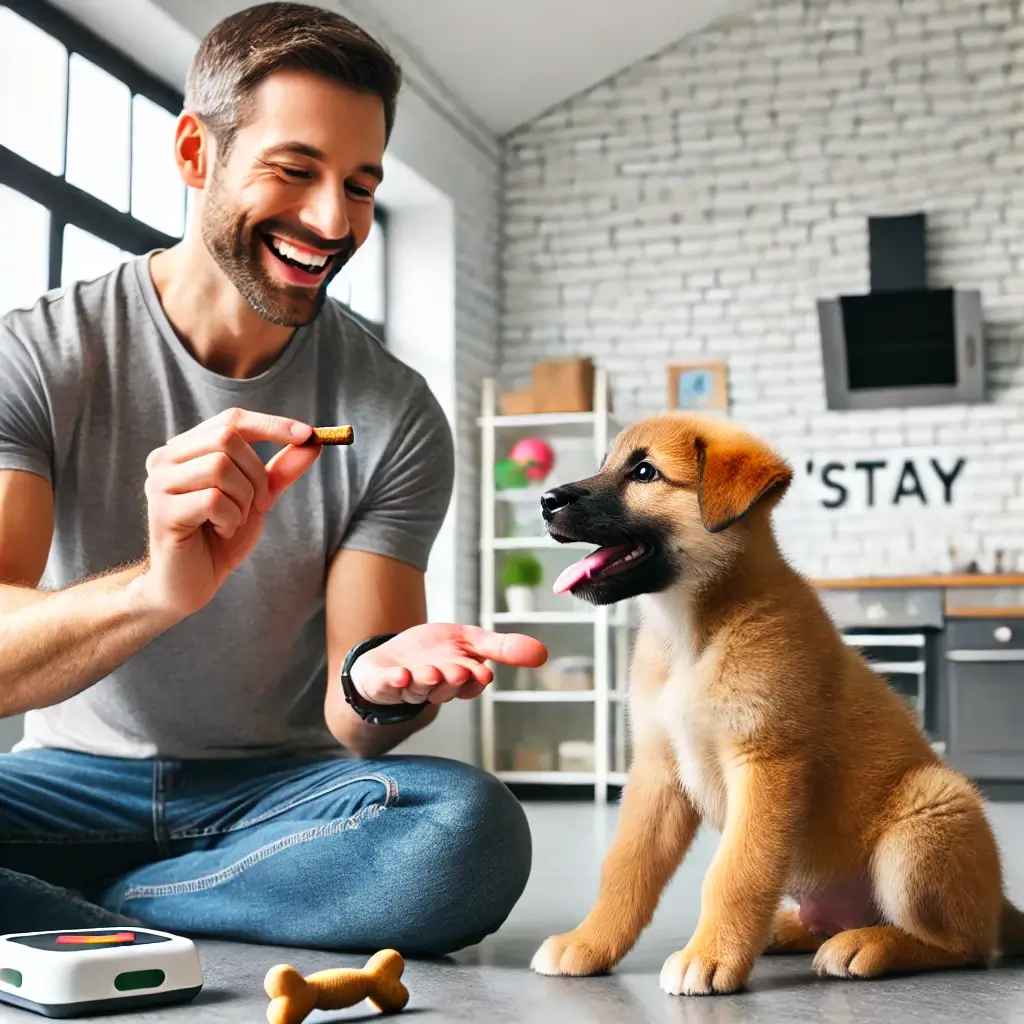
Training a puppy is about more than teaching commands. Patience, consistency, and a grasp of your puppy’s unique personality. Proven principles will help your puppy learn while enjoying the process.
1. Positive Reinforcement is Key
Positive reinforcement focuses on rewarding good behavior instead of punishing mistakes. When your puppy does something good, reward it right away. Use treats, praise, or playtime. This method encourages the repetition of good behavior.
Example: If your puppy sits on command, say “Good job!” and offer a treat. Over time, this connection becomes natural, and your puppy learns faster.
Discover the best training treats on Amazon.
2. Timing is Everything
Puppies thrive in the present moment. Timing your rewards is essential. It helps them link the reward to the behavior. If there’s a delay, they may not understand why they’re being praised.
Tip: Reward your puppy immediately after they obey a command. For instance, give the treat the moment it sits or lies down.
3. Consistency Builds Confidence
Puppies thrive on routines. If you use different commands or inconsistent tones, your puppy may become confused. Stick to one word for each command, like “sit” or “stay,” and ensure everyone in the household uses the same terms.
Consistency also applies to training locations. Begin in a quiet area to minimize distractions before progressing to busier settings.
4. Keep Sessions Short and Fun
Puppies have short attention spans. Training sessions should last 10–15 minutes to keep them engaged. Incorporate breaks for play or cuddles to make the experience enjoyable.
Shop interactive toys on AliExpress.
5. Avoid Punishment
Punishing a puppy for mistakes creates fear and damages trust. Instead, redirect negative behavior. For example, if your puppy chews on furniture, offer a chew toy instead.
Table: Quick Comparison of Training Methods
| Training Principle | Description | Example |
|---|---|---|
| Positive Reinforcement | Rewarding good behavior | Treat for sitting |
| Consistent Commands | Using the same words and tone for each action | “Sit” instead of variations |
| Patience and Timing | Rewarding immediately after correct behavior | Immediate treat for recall |
6. Recognize Your Puppy’s Limits
Not every puppy learns at the same pace. Be patient and adapt your methods to suit their personalities. High-energy puppies may need more exercise before training. Shy ones may need extra encouragement.
Visual Aid Placeholder
Image Idea:
A cheerful trainer is teaching a puppy to “stay” with a treat in hand. The puppy is focused, with toys and a training clicker visible in the background.
External Reference
For detailed tips on puppy training, visit Humane Society’s Training Guide.
Step-by-Step Puppy Training Techniques
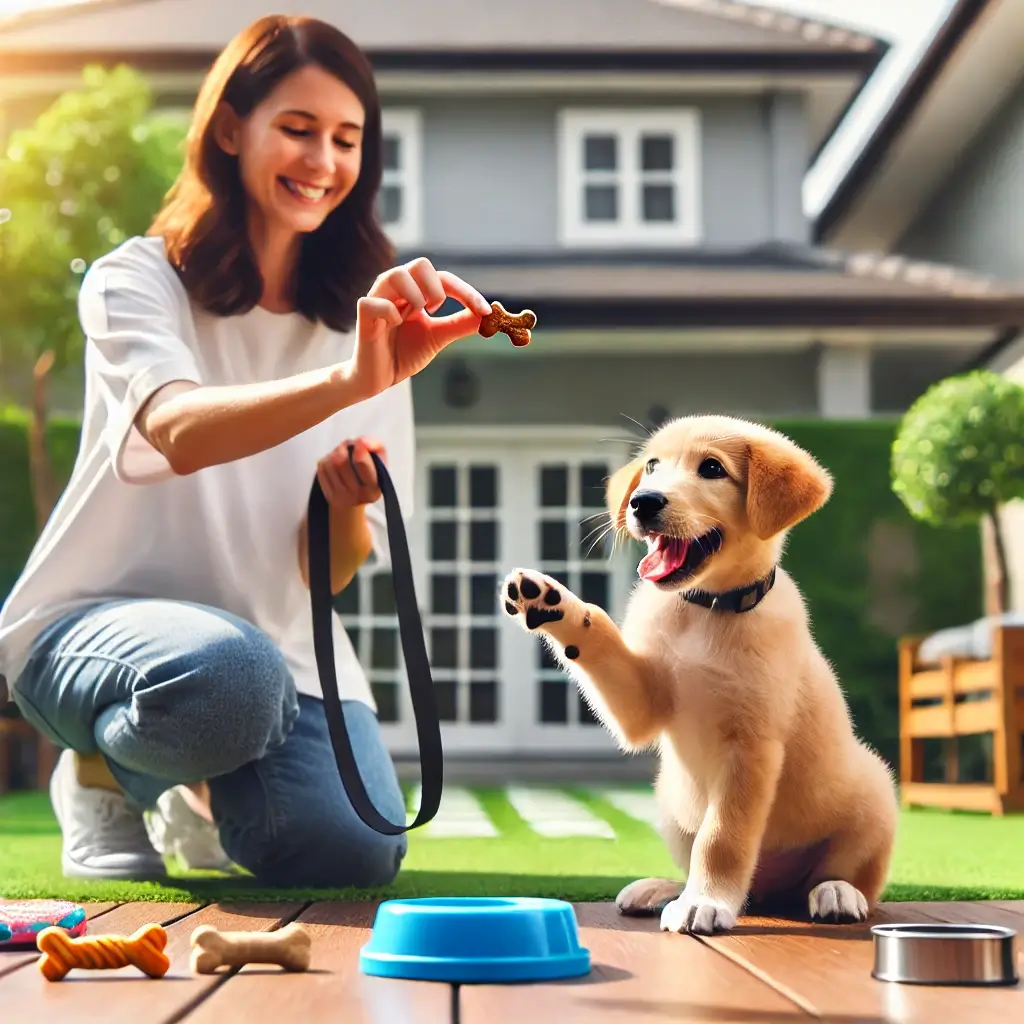
Training a puppy can be a fun and rewarding process when done with patience and the right techniques. You can teach your puppy essential skills that will last a lifetime. Break training into manageable steps. Below are step-by-step methods to train your puppy. They will help it master basic commands and behaviors.
1. Teaching Basic Commands
a. Sit
- Hold a treat close to your puppy’s nose.
- Move the treat upward, causing their head to follow and their bottoms to lower.
- Once they are seated, say “Sit” and reward them with the treat. Buy premium treats for training on Amazon.
b. Stay
- Ask your puppy to sit.
- Hold up your hand and say, “Stay.”
- Step back slowly. If your puppy stays, reward it. Gradually increase the distance.
c. Come
- Attach a leash to your puppy’s collar.
- Kneel and say “Come” while gently pulling the leash towards you.
- Reward your puppy once they come to you.
2. Potty Training
Consistency is key to potty training. Take your puppy outside every two hours, especially after meals and naps. Use the same spot for potty breaks to reinforce habits. Reward them immediately after they relieve themselves outdoors.
Tip: If accidents happen indoors, clean the area well to remove the scent. This will discourage repeat incidents.
Shop for cleaning solutions on AliExpress.
3. Leash Training
Walking on a leash without pulling is a crucial skill. Start by allowing your puppy to explore the leash indoors. Use treats to guide them beside you as you walk. Stop walking if they pull, resuming only when they return to your side.
Check out durable leashes on AppSumo.
4. Crate Training
Crates provide a safe and secure space for your puppy. Introduce the crate in stages. Place treats and toys inside it. This will create a positive association. Never use the crate as punishment.
5. Socialization
Expose your puppy to new environments, people, and other pets early on. Proper socialization reduces anxiety and helps it adapt to different situations.
Table: Puppy Training Checklist
| Training Task | Recommended Age | Tools Needed | Reward Type |
|---|---|---|---|
| Sit Command | 8 weeks+ | Treats, calm environment | Treats or praise |
| Potty Training | 8-10 weeks | Outdoor space, cleaning supplies | Immediate reward |
| Leash Training | 10 weeks+ | Leash, harness, treats | Treats or playtime |
| Crate Training | 12 weeks+ | Comfortable crate, toys | Treats or comfort |
6. Troubleshooting Common Challenges
- Biting: Redirect your puppy’s attention to chew toys when it nips at your fingers.
- Disobedience: Stay patient and keep training sessions short and engaging.
- Fear of the Leash: Let your puppy wear the leash indoors without holding it to get him comfortable.
Visual Aid Placeholder
Image Idea:
A puppy practices commands like “sit” and “stay” with its trainer in a backyard setting. Include a leash, treats, and toys in the scene for context.
External Reference
For additional puppy training tips, visit ASPCA Puppy Training Guide.
Troubleshooting Common Puppy Training Challenges
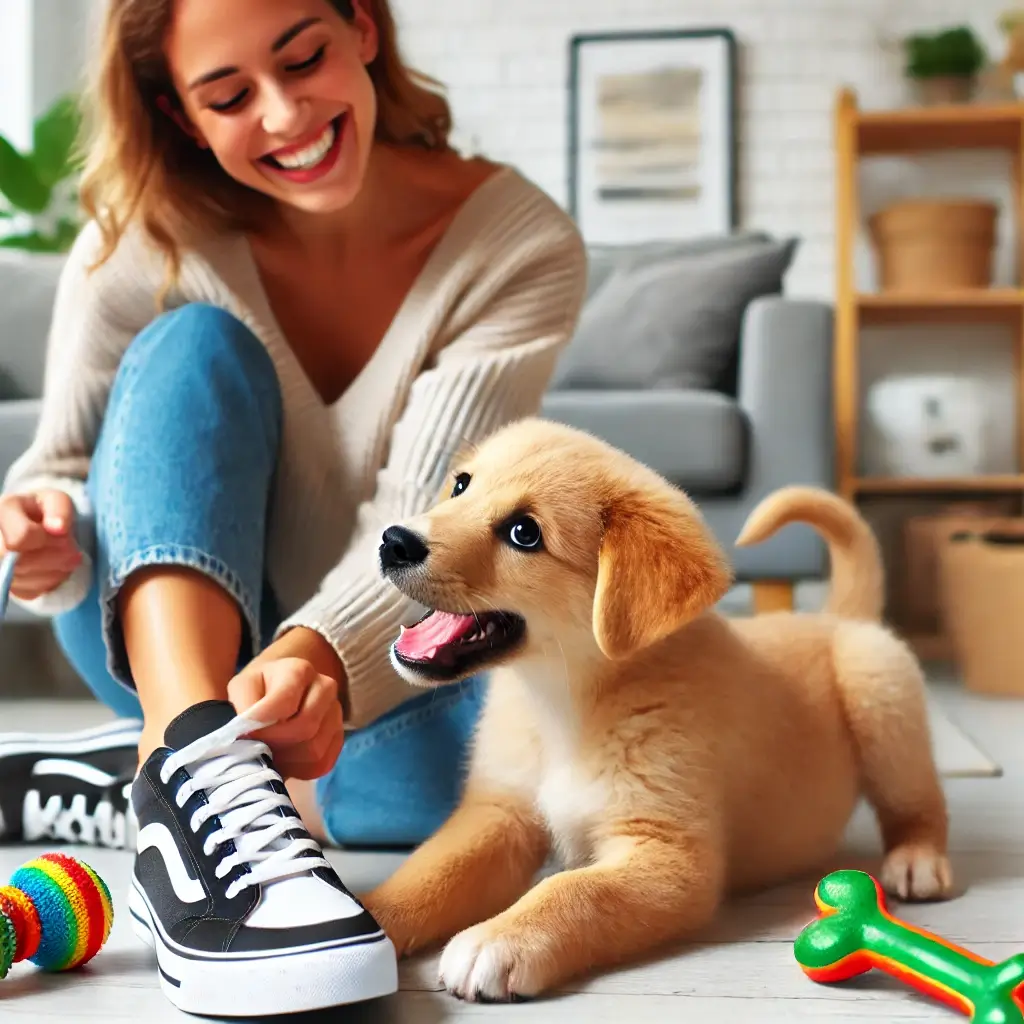
While training a puppy can be rewarding, it’s not always easy. Puppies are naturally curious and energetic, which can sometimes lead to unwanted behaviors. We must find and fix the root of these challenges. The right methods will ensure steady progress.
1. Dealing with Biting and Nipping
Puppies explore the world with their mouths, which often leads to biting. While this behavior is natural, it is essential to curb it early.
- Why Puppies Bite: Teething or Playing.
- Solution: Redirect their biting to chew toys. When your puppy bites, stop playing and offer an appropriate toy. Check out durable chew toys on Amazon.
If biting persists, use a firm “No” and withdraw attention for a moment.
2. Addressing Potty Accidents
Accidents are part of the process during potty training. They often happen because the puppy is not taken outside frequently enough.
- Why Accidents Happen: Lack of a consistent schedule or understanding.
- Solution: Increase the frequency of potty breaks. Always take your puppy outside after eating, drinking, or waking up.
Clean accidents with enzymatic cleaners to remove scents. Shop effective cleaners on AliExpress.
3. Excessive Barking
While barking is a form of communication, excessive barking can be disruptive.
- Why Puppies Bark: Boredom, fear, or attention-seeking.
- Solution: Identify the trigger. If it’s boredom, provide toys and interactive games. If barking is fear-based, work on gradual exposure to the stimulus.
Consider crate training as a calming technique. Find a crate that fits your puppy’s needs on AppSumo.
4. Pulling on the Leash
Leash training is one of the most common challenges. Puppies may pull out of excitement or a desire to explore.
- Why Puppies Pull: Lack of understanding of leash behavior.
- Solution: Stop walking when your puppy pulls. Resume only when they stop pulling and reward calm walking behavior. Over time, they will learn that pulling halts progress.
5. Overcoming Fear and Anxiety
Some puppies are naturally timid and may show fear in new situations.
- Why Fear Occurs: Lack of exposure during early stages of life.
- Solution: Gradually introduce new environments, people, and pets. Use treats to associate positive experiences with these introductions.
Table: Common Training Challenges and Solutions
| Challenge | Likely Cause | Effective Solution |
|---|---|---|
| Biting and Nipping | Teething or play | Redirect to chew toys |
| Potty Accidents | Inconsistent routine | Increase outdoor trips, use cleaners |
| Excessive Barking | Boredom or fear | Identify triggers, provide distractions |
| Pulling on Leash | Excitement | Stop walking, reward calm behavior |
| Fear and Anxiety | Lack of socialization | Gradual exposure, use positive reinforcement |
6. Staying Patient and Consistent
It’s easy to feel frustrated when training doesn’t go as planned. Remember that puppies are still learning, and patience is essential. Celebrate small wins and focus on building trust.
Visual Aid Placeholder
Image Idea:
A person redirects a puppy from biting a shoe to a toy. A happy owner rewards the puppy for this. The setting is a clean home and training supplies (like treats and a leash).
External Reference
Learn more about solving common puppy challenges at RSPCA Puppy Training Advice.
Advanced Puppy Training Techniques

Once your puppy has mastered basic commands, use advanced training techniques. They boost your dog’s obedience, mental stimulation, and behavior. Advanced training builds on the trust and consistency from early lessons.
1. Teaching Recall
Recall is your puppy’s ability to come when called, even with distractions.
- Steps to Train Recall:
- Start indoors in a quiet space. Use a happy tone to call your puppy with the command “Come.”
- Reward them with treats or praise when they approach you.
- Gradually practice outdoors with a long leash to simulate distance.
- Increase distractions slowly as your puppy becomes reliable.
Find long training leashes on Amazon.
2. Leash-Free Walking
Walking off-leash is a skill that demonstrates complete trust and control. Start in enclosed spaces before attempting open areas.
- Tips:
- Ensure your puppy responds to the “Stay” and “Come” commands perfectly.
- Practice off-leash walking in a fenced area first.
- Reward them for staying close and not wandering off.
3. Advanced Commands
Teaching advanced commands like “Roll Over,” “Fetch,” or “Leave It” keeps your puppy sharp. It engages its mind.
- Roll Over:
- Ask your puppy to lie down.
- Use a treat to guide its head toward your shoulder and roll your body.
- Reward them immediately when they complete the role.
- Fetch:
- Throw a toy and say, “Fetch.”
- Encourage your puppy to pick up the toy and return it.
- Reward them with treats or playtime.
Durable fetch toys are available on AliExpress.
4. Agility Training
Agility courses provide physical and mental stimulation. Start with simple obstacles, like tunnels, jumps, and ramps.
- How to Begin:
- Set up an obstacle course in your yard.
- Use treats to guide your puppy through each obstacle.
- Gradually increase the difficulty as they become confident.
Check agility training kits on AppSumo.
Table: Advanced Training Benefits
| Technique | Benefit | Tools Needed |
|---|---|---|
| Recall | Safety in off-leash settings | Long leash, treats |
| Leash-Free Walking | Freedom and trust | Enclosed training area |
| Advanced Commands | Mental stimulation | Treats, toys |
| Agility Training | Physical exercise, confidence | Agility course equipment |
5. Behavior-Specific Training
Some dogs need special training for specific behaviors. For example:
- Counter Surfing: Use the “Leave It” command to deter your puppy from jumping on the counters.
- Train your dog to sit calmly upon the arrival of visitors.
6. Consistent Reinforcement
Advanced training requires patience and regular practice. Use these techniques daily. Reward good behaviors to make them habits.
Visual Aid Placeholder
Image Idea:
A puppy practices agility on a small ramp, with its trainer offering a treat at the finish. The scene is bright and engaging, showcasing an agility course and training equipment.
External Reference
Explore agility training tips at American Kennel Club (AKC).
Monitoring Progress and Maintaining Results
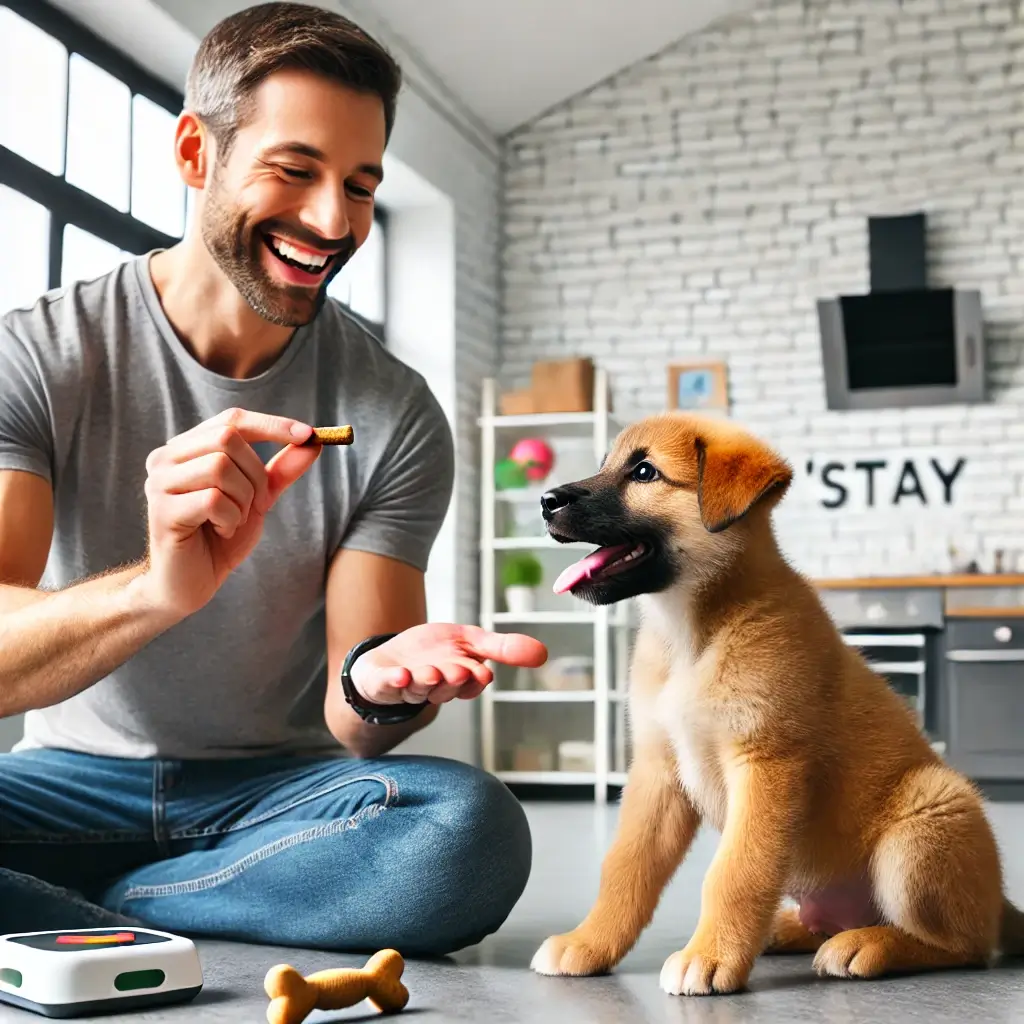
Training a puppy is a continuous process that extends beyond teaching commands. Check your puppy’s progress. This ensures it keeps its training. It will help it grow into a well-behaved adult dog. Regular practice, consistency, and tracking are crucial for long-term success.

1. Tracking Progress
Tracking your puppy’s training milestones helps find what works and what doesn’t. You can use a journal or training app to log progress.
- What to Track:
- Commands mastered (e.g., “Sit,” “Stay,” “Come”).
- Behavioral improvements (e.g., reduced barking or biting).
- Socialization milestones (e.g., interactions with other dogs).
2. Setting Realistic Goals
Break training into manageable goals. For instance, aim to master one new command each week. Celebrate small wins to stay motivated.
If your puppy learns “Stay” for 10 seconds, increase the duration to 20 seconds and then to 30 seconds.
3. Consistent Practice
Consistency is key to maintaining results. Daily, set aside time for short training sessions. Do this even after your puppy masters basic commands.
- Tip: Incorporate training into everyday activities. For example, practice “Sit” before mealtime or “Come” during outdoor walks.
Shop training essentials on Amazon.
4. Reinforcing Learned Behaviors
Puppies may occasionally forget commands or behaviors if they aren’t reinforced. Use rewards to refresh their memory and encourage good habits.
- Examples of Reinforcement:
- Praise and treats for obeying commands.
- Redirecting bad behavior with positive alternatives (e.g., offering a chew toy).
5. Addressing Regressions
Regression is normal, especially during developmental stages. Stay patient and revisit basic training techniques to address setbacks.
Table: Training Maintenance Tips
| Maintenance Step | Frequency | Tools Needed |
|---|---|---|
| Practice Basic Commands | Daily | Treats, toys |
| Introduce New Challenges | Weekly | Training props, agility course |
| Socialization | Ongoing | Walks, meetups with other pets |
6. Engaging with New Challenges
Introduce new activities or environments to keep training engaging. For example, try agility courses or advanced commands to test your puppy’s abilities.
Discover agility kits on AppSumo.
7. Seeking Professional Support
If progress stalls or regressions persist, consider seeking help from a certified trainer. Professional input can provide insights and tailored solutions.
Explore training resources on AliExpress.
Visual Aid Placeholder
Image Idea:
A cheerful puppy gets a treat from its owner during a training session. A notebook nearby tracks progress. The setting is a bright and clean living room.
External Reference
For more tips on maintaining puppy training, visit PetMD’s Training Guide.
More Tips: The Essentials of Puppy Training
Training a puppy can be an exciting and fulfilling journey, but it often comes with many questions. From understanding what is the first thing you should train your puppy to knowing how to train a puppy at home, each step plays a vital role in shaping your pup’s behavior and creating a strong bond. This guide will explore the key areas of training to ensure a happy and obedient companion.
What is the First Thing You Should Train Your Puppy?
The first step in training a puppy is teaching it its name and simple commands like “Sit” and “Come.” These commands establish communication and lay the groundwork for more advanced training.
Pair commands with treats and positive reinforcement for the best results. It’s essential to train a puppy to sit. It’s the simplest command, and trainers use it often.
Where Should a Puppy Sleep at Night?
Creating a safe and comfortable sleeping environment is critical. Crate training a puppy is a popular method, providing a secure space while aiding in potty training. Place the crate in a quiet area and line it with soft bedding. For puppies still adjusting, keep the crate close to you at night. It can help ease their anxiety about being apart.
How Can I Train My Puppy Myself?
Self-training requires consistency and patience. Using puppy training tips, such as short sessions and rewards, can help you make progress at home. Break training into manageable tasks, focusing on one command at a time. Whether it’s how to train a puppy to pee on a pad or mastering leash walking, daily practice ensures steady improvement.
What is the Right Age to Train a Puppy?
Puppies are most receptive to training between 8 and 12 weeks of age. This is the perfect time to teach basic commands, start socialization tips for puppies, and establish good habits. Puppies can learn at any age. But early training helps them ingrain good behaviors from the start.
How to Train a Puppy Not to Bite
Biting and nipping are common during the teething phase. To curb this, redirect your puppy to chew toys whenever they bite. If they nip at your hands, use a firm “No” and stop playing temporarily. Understanding how to train a puppy not to bite is crucial for ensuring safe interactions with people and other pets.
Potty Training a Puppy: Indoors and Outdoors
Consistency is key when it comes to potty training. If you’re wondering how to train a puppy to pee outside, take them to the same spot regularly and reward them immediately after they go. For indoor training, use pee pads strategically and gradually transition to outdoor training.
Understanding the puppy training schedule by age can help you manage their developmental stages effectively.
Training a Puppy for Beginners
For those new to training, focus on simple and practical techniques. Learning how to train a dog or how to train puppies involves starting with basic commands, crate training, and potty routines. Following a puppy training for beginners UK approach ensures even first-time pet parents can achieve success.
How to Train a Puppy in 7 Days
With a structured plan, you can teach essential commands in one week. Dedicate each day to a specific skill, such as sitting, staying, and leash walking. Combining techniques like how to train a puppy for toilet and how to train a puppy to pee outside makes it possible to establish good habits quickly.
Advanced Puppy Training and Beyond
Once your puppy has mastered the basics, it’s time to explore advanced techniques. Incorporate agility exercises or teach commands like “Roll Over” to keep your pup mentally engaged. Using puppy training gear, such as clickers and leashes, enhances the experience for both you and your dog.
Frequently Asked Questions (FAQ) about How to Train a Puppy
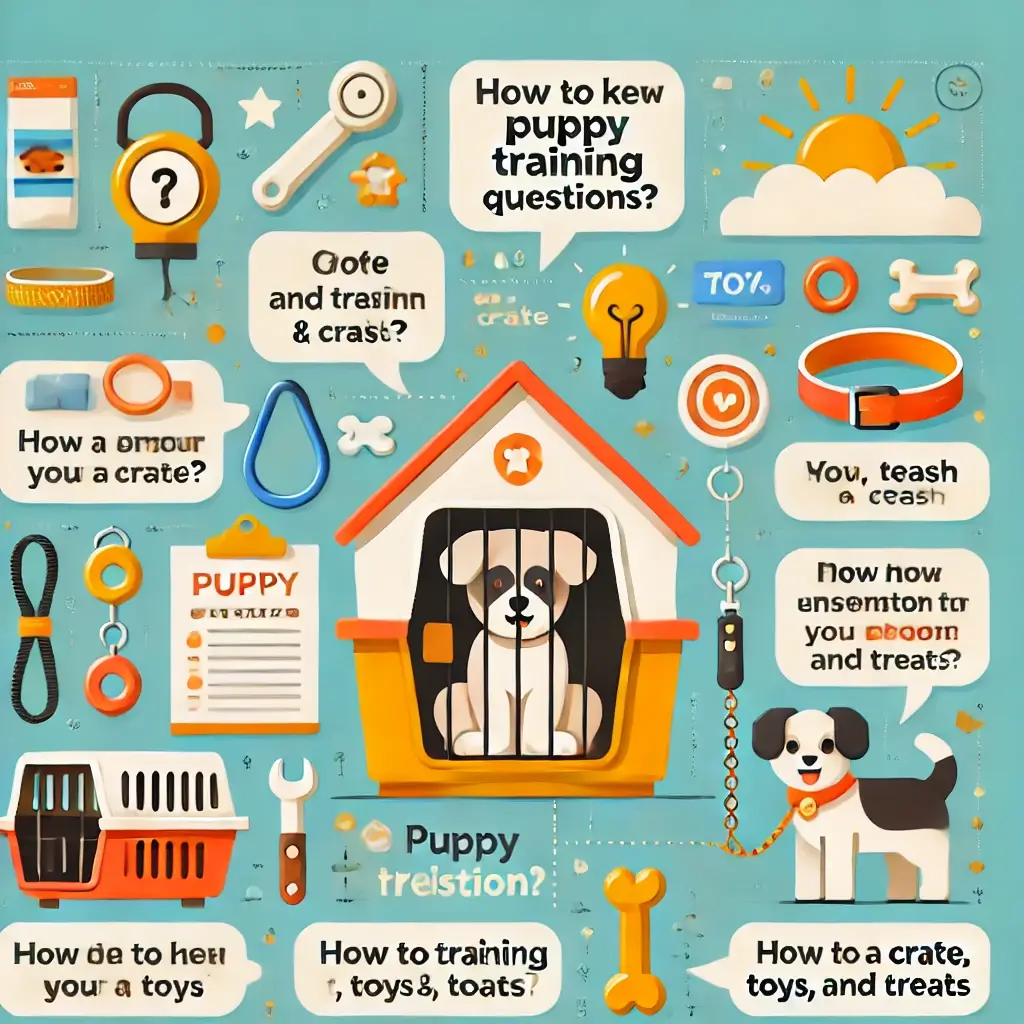
When it comes to how to train a puppy, new pet owners often have several common questions. Here are answers to some of those questions. They will help you with the training process.
1. What is the first thing you should train your puppy?
The first thing you should train your puppy is its name and simple commands like “Sit” and “Come.” These commands form the foundation for more advanced training. Start with short sessions and use positive reinforcement to encourage learning.
2. Where should a puppy sleep at night?
Puppies should sleep in a quiet, comfy spot. A crate is best during early training. Crates provide a sense of security and help with potty training. Ensure the crate is the right size and line it with soft bedding.
Find a comfortable crate on Amazon.
3. How can I train my puppy myself?
Train your puppy by using consistent routines and positive reinforcement. Practice daily. Break training into short 10–15 minute sessions, focusing on one command at a time. Patience and consistency are key.
4. What is the right age to train a puppy?
Puppy training should begin as early as eight weeks old. At this age, puppies are impressionable. They can learn basic commands, social skills, and crate training. Gradual exposure to new environments helps build their confidence.
5. How do I train a puppy not to bite?
Redirect your puppy’s biting to toys when they nap. Stop playing immediately if they bite and use a firm “No” to discourage the behavior. Always reward them when they engage with appropriate toys instead.
Shop durable chew toys on AliExpress.
6. How can I train a puppy to pee outside?
Take your puppy outside several times, especially after eating, drinking, or napping. Use a consistent phrase, like “Go potty.” Then, reward them with treats or praise right after they go outside.
7. How can I make training sessions more effective?
Training sessions should be short, fun, and focused. Use treats, toys, or praise as rewards to keep your puppy motivated. Always end sessions on a positive note to encourage eagerness for the next one.
Table: Puppy Training FAQ Summary
| Question | Quick Answer |
|---|---|
| First thing to train | Name, “Sit,” and “Come” |
| Puppy’s sleeping arrangement | Crate with soft bedding |
| Age to start training | 8 weeks |
| Preventing biting | Redirect to toys, firm “No” |
| Encouraging outdoor potty habits | Frequent trips, consistent phrases, rewards |
Visual Aid Placeholder
Image Idea:
An infographic, set against a bright background, answers common puppy training questions. It is clean and organized and uses icons of training tools like a crate, leash, and toys.
External Reference
For extra FAQs on puppy training, visit Humane Society’s Puppy Training Guide.
Let me generate the HD image for this section and move to the article’s conclusion.
Conclusion: Building a Lasting Bond with Your Puppy

Training your puppy is a journey filled with challenges and rewards. Your time and effort in teaching will shape your puppy. It will become a well-behaved, confident companion. Training a puppy is not about discipline. It’s also about strengthening your bond with your furry friend.
Key Takeaways from Puppy Training
- Start training early, at around 8 weeks old for your puppy.
- Use positive reinforcement to encourage good behavior.
- Practice consistency in commands and routines to avoid confusion.
- Address challenges like biting or accidents with patience and effective strategies.
Explore tools for successful training on Amazon.
Creating a Lifelong Relationship
Training doesn’t stop once your puppy masters basic commands. Advanced techniques, agility courses, and new challenges will engage your dog. This will keep its mind sharp and its behavior consistent. This effort helps maintain trust and reinforces your shared habits.
Why Consistency Matters
Consistency is the backbone of successful puppy training. Regular practice is key. It leads to lasting results. It can stick to a training schedule or reinforce learned behaviors. Training sessions also offer opportunities to deepen your relationship with your puppy.
Shop agility kits and training accessories on AppSumo.
Visual Aid Placeholder
Image Idea:
A dog and its owner share a heartwarming moment after a successful training session. The scene is sunny and outdoors. The owner holds a treat. The dog sits obediently.
Final Thoughts
Every puppy is unique. The training process may need adjustments to suit its personality and needs. Celebrate small wins. If problems persist, seek professional help. With dedication and love, you’ll teach your puppy skills. You’ll also nurture a lifelong bond.
For more resources on puppy training and care, visit PetMD’s Training Guide.
Let me generate the HD image for this section to complete the article.

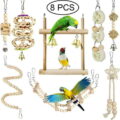


Well I really enjoyed studying it. This tip procured by you is very helpful for accurate planning.